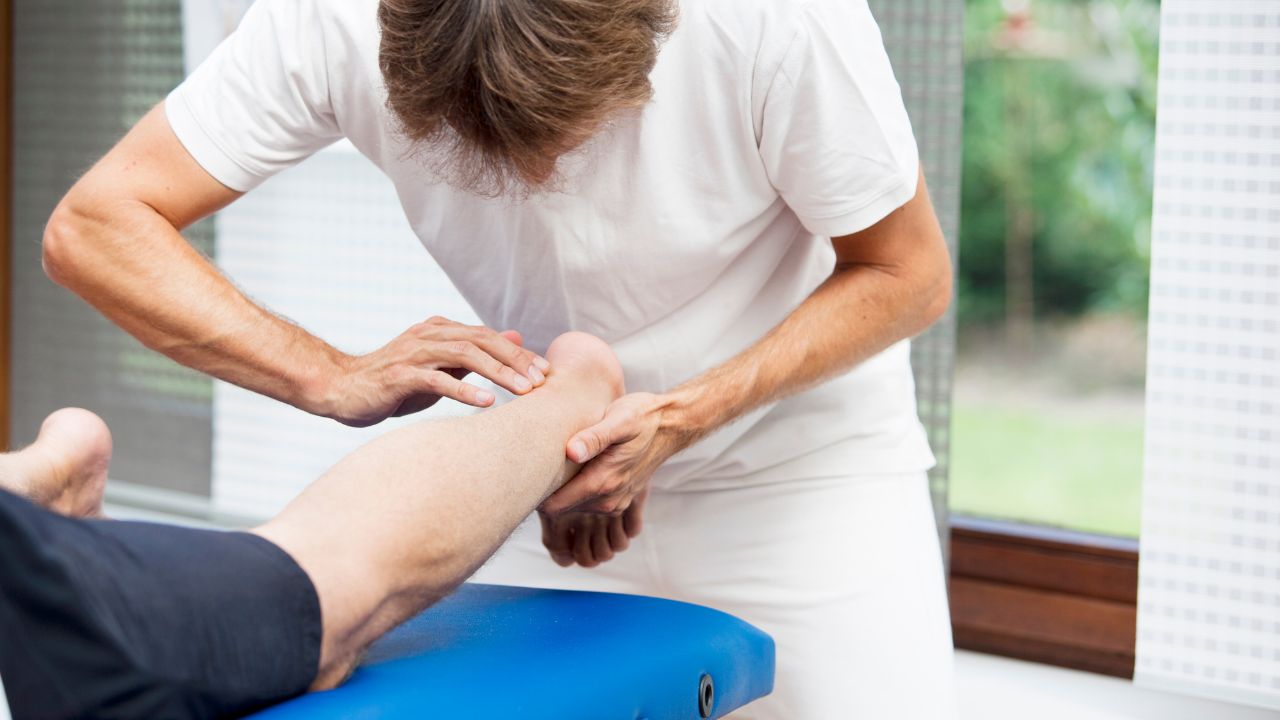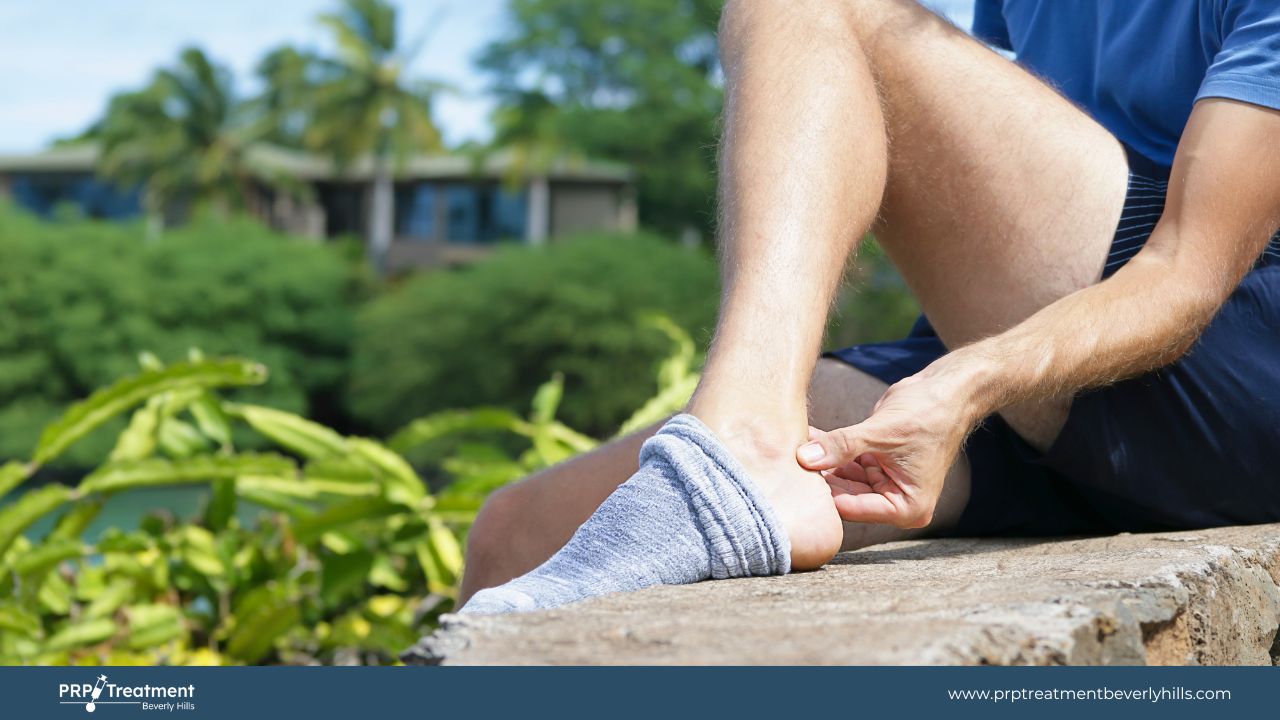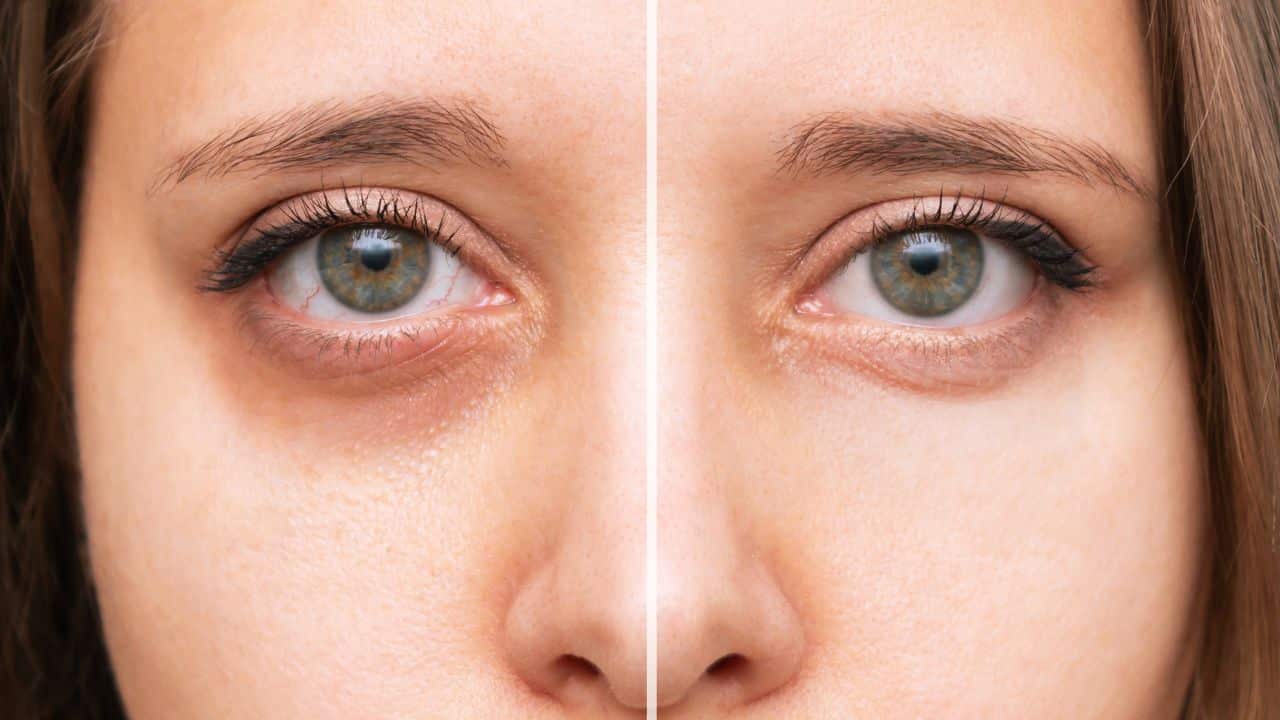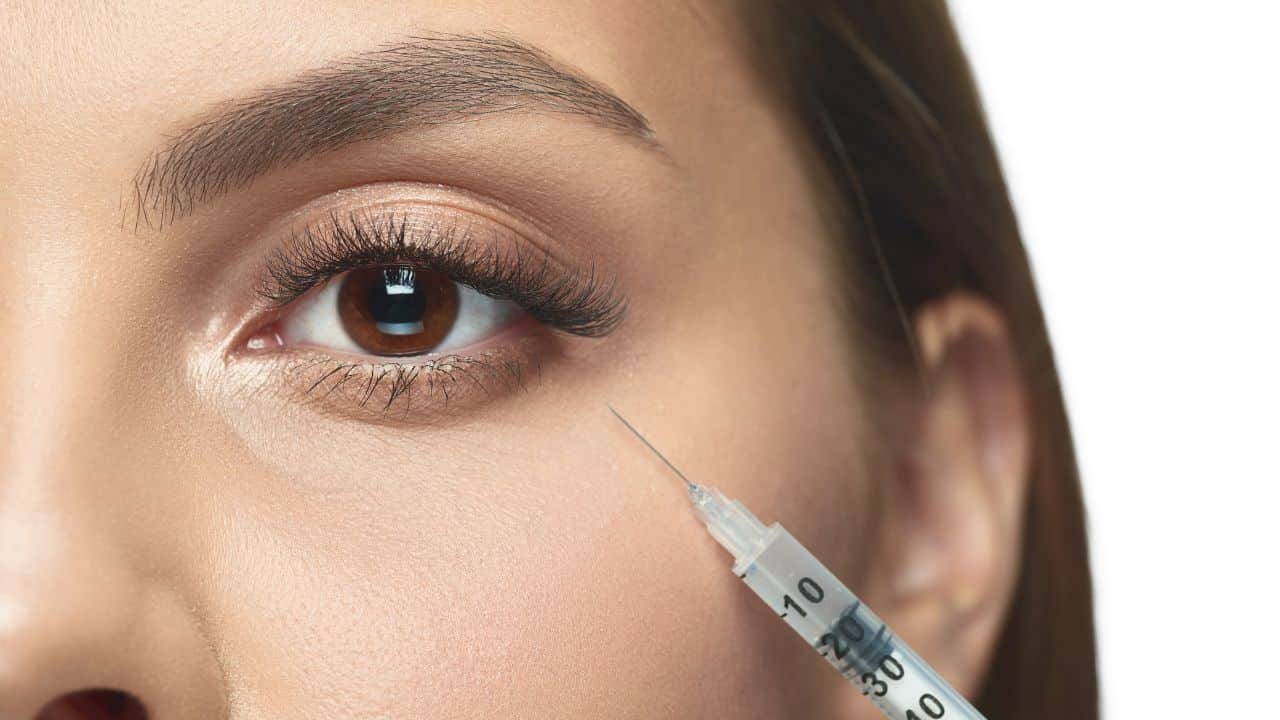Achilles tendonitis is a common and painful condition that affects the tendon connecting the calf muscles to the heel bone. Many people suffer from this condition due to overuse, strain, or injury, leading to inflammation and discomfort.
Finding effective treatment options is crucial for those who want to maintain an active lifestyle and prevent long-term complications. One such option is platelet-rich plasma (PRP) therapy, which has gained popularity as a non-surgical solution for healing Achilles tendonitis.
In this blog, we will explore PRP therapy’s benefits and how it can help you find relief from Achilles tendonitis.
How PRP Therapy Works for Achilles Tendonitis?
The primary mechanism behind PRP therapy is the release of growth factors and cytokines, which are proteins that modulate the inflammatory response and facilitate tissue repair.
When injected into the damaged Achilles tendon, PRP stimulates the healing process by attracting cells responsible for tissue regeneration and promoting collagen production and other essential components of a healthy tendon.
This can lead to reduced inflammation, decreased pain, and faster recovery for patients suffering from Achilles tendonitis.
Comparing PRP to Traditional Treatments
When it comes to treating Achilles tendonitis, there are several traditional treatment methods that patients and healthcare providers have relied on for years. These include rest, ice, compression, elevation (RICE), anti-inflammatory medications, and physical therapy.
However, with the emergence of PRP therapy as a non-surgical solution, it’s essential to compare its pros and cons to traditional treatments to help patients make an informed decision about their care.

Pros of PRP Therapy
Targeted healing: Unlike traditional treatments, PRP therapy actively stimulates the body’s natural healing process, promoting tissue regeneration at the injury site. This targeted approach can result in more effective healing and pain reduction.
Minimally invasive: PRP therapy involves a simple injection, avoiding the need for surgery or more invasive procedures. This makes it an attractive option for patients who want to minimize downtime and recovery periods.
Reduced reliance on medications: PRP therapy can help reduce the need for pain-relieving and anti-inflammatory medications, which may have unwanted side effects, especially when used long-term.
Lower risk of complications: Compared to surgical intervention, PRP therapy has a lower risk of infection, blood clots, and nerve damage.
Cons of PRP Therapy
Cost: PRP therapy can be more expensive than traditional treatments, requiring specialized equipment and expertise. Insurance coverage for PRP treatment varies, which may be a limiting factor for some patients.
Limited research: While there is a growing body of evidence supporting the effectiveness of PRP therapy, more extensive research is needed to understand its long-term effects and optimal treatment protocols fully.
Pros of Traditional Treatments
Accessibility: Traditional treatments like RICE, medications, and physical therapy are widely available and can be easily implemented by patients in consultation with their healthcare provider.
Lower cost: Generally, traditional treatments are more affordable than PRP therapy, making them more accessible to a broader range of patients.
Cons of Traditional Treatments
Limited effectiveness: Traditional treatments often focus on managing symptoms rather than addressing the underlying tissue damage. This may result in longer recovery times and lingering discomfort.
Potential side effects: Long-term use of anti-inflammatory medications can have adverse side effects, such as gastrointestinal issues, kidney damage, and increased risk of cardiovascular events.
The PRP Treatment Process for Achilles Tendonitis

The first step in the PRP treatment process is a thorough evaluation and consultation with a qualified healthcare professional. This ensures that you are a good candidate for the procedure and allows for developing a personalized treatment plan. The PRP injection is a relatively quick procedure, often completed within an hour.
A small blood sample is collected and processed during the treatment to extract the platelet-rich plasma. This concentrated solution is then carefully injected into the affected tendon under ultrasound guidance.
Following the procedure, you may be advised to limit activity for a few days to allow the PRP to work its magic, with a gradual return to regular activities as advised by your healthcare professional.
Who is a Good Candidate for PRP Treatment?
Ideal candidates for PRP therapy are those who have not found adequate relief from conservative treatment methods and want to avoid surgery. Factors such as age, overall health, and the severity of the condition may also influence your eligibility for PRP treatment.
A consultation with a qualified PRP specialist is the best way to determine if this innovative therapy is right for you.
Post-PRP Recovery: Tips and Tricks for Maximizing Your Achilles Tendon Healing
After receiving PRP therapy for Achilles tendonitis, following specific post-treatment guidelines is essential to maximize the healing process and ensure the best possible outcome. Here are some tips and tricks to help you optimize your recovery after PRP therapy:
Rest and Elevate
In the first few days following your PRP injection, giving your body time to heal is crucial. This means reducing activity levels and, when possible, elevating the affected leg to minimize swelling and promote circulation.
Follow your Healthcare Provider’s Advice
Your healthcare provider will give you specific instructions regarding activity limitations, pain management, and any necessary immobilization, such as wearing a walking boot. Adhering to these guidelines is vital for a successful recovery.
Gradual Return to Activity
As your symptoms improve, your healthcare provider will recommend a gradual return to your regular activities. Avoid the temptation to push yourself too hard, too soon, as this can lead to setbacks in the healing process.
Engage in Physical Therapy
Once you have received clearance from your healthcare provider, participating in a physical therapy program tailored to your needs can significantly improve your recovery. A physical therapist will guide you through targeted exercises and stretches designed to restore strength, flexibility, and function to your Achilles tendon.
Maintain a Healthy Lifestyle
Supporting your body’s healing process includes maintaining a balanced diet, staying well-hydrated, and getting adequate sleep. A diet rich in essential nutrients like vitamins, minerals, and protein can help promote tissue repair and overall well-being.
Wear Supportive Footwear
Wear supportive, well-fitting shoes that provide proper arch support and cushioning as you return to regular activities. This can help alleviate stress on the Achilles tendon and prevent further injury.
Listen to Your Body
Pay close attention to your body’s signals throughout your recovery. If you experience increased pain or swelling, it may indicate that you need to scale back your activity level or consult your healthcare provider.
Be Patient
Healing from Achilles tendonitis can take time, even with the help of PRP therapy. It’s essential to remain patient and trust the process, knowing that your commitment to a proper recovery will lead to the best possible outcome.
Potential Risks and Side Effects of PRP Treatment
As with any medical procedure, there are some risks and side effects associated with PRP therapy. However, since PRP is derived from your blood, the likelihood of an adverse reaction is significantly reduced.
Short-term side effects may include pain, swelling, or bruising at the injection site. These effects are generally mild and resolve independently within a few days. Following your healthcare provider’s post-treatment instructions is essential to minimize these side effects and promote optimal healing.
Long-term complications are rare but can include infection, nerve damage, or adverse reactions to the injected material. To mitigate these risks, working with an experienced and qualified PRP treatment specialist who adheres to strict safety protocols and utilizes sterile techniques is crucial.
Furthermore, open communication with your healthcare provider regarding your medical history, medications or supplements, and known allergies can help prevent potential complications.
Conclusion
Achilles tendonitis can be a debilitating condition that impacts your daily life and hinders your ability to stay active. PRP therapy offers a promising non-surgical solution for those seeking relief from this painful condition.
By harnessing the body’s natural healing capabilities, PRP treatment can promote tissue regeneration, reduce inflammation, and accelerate recovery.
If you are struggling with Achilles tendonitis and have not found adequate relief through conservative treatment methods, PRP therapy may be the solution you’ve been searching for. A consultation with a qualified PRP specialist will help determine if this innovative therapy is right for you.
As with any medical procedure, weighing the potential benefits against the risks and side effects is crucial. However, when performed by an experienced professional, PRP therapy can provide an effective, non-invasive treatment option for Achilles tendonitis, helping you regain mobility and return to the activities you love.





